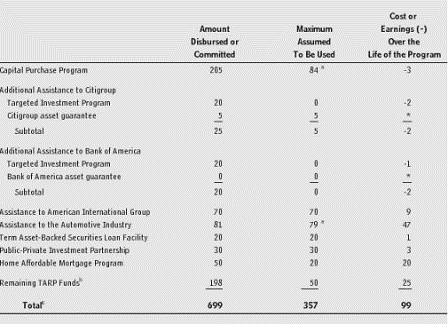[Skip to the end]
Seems at this late hour the payroll tax adjustment is about all that can get the job done to immediately support demand.
Yes, the banking model is to make loans to individuals and business that become illiquid assets and match that with liabilities that are not at risk either.
So if markets put a discount on bank assets due to liquidity, implied is a premium on the liability side of banking due to its unlimited ability to fund itself.
And yes, it’s when, via securitization, for example, relatively illiquid assets are not ‘match funded’ to maturity, liquidity risk is there.
This same liquidity risk is also there when banks are not provided with secure funding due to errant institutional structure that misses that point regarding the banking model.
Beyond that is the risk of default which is a separate matter.
In the banking model this is determined by credit analysis, rather than market prices.
This is a political decision, entered into for further public purpose, and requires regulation and supervision of asset quality, capital requirements, and other rules to limit risks banks can take with their government-insured deposits.
When banks are deemed insolvent by the FDIC due to asset deterioration, they shut them down, reorganize, sell the assets and liabilities, etc.
When it’s due to excessive risk due to a failure of regulation, regulations are (at least in theory) modified. It’s all a work in progress.
I see this crisis differently than most.
We had two thing happening at once.
First, by 2006 the federal deficit had once again become too small to support the credit structure as financial obligations ratios reached limits, all due to the countercyclical tax structure that works to end expansions by reducing federal deficits as it works to reverse slowdowns by increasing federal deficits.
At the same time, while the expansion was still under way, delinquencies on sub prime mortgages suddenly shot up and it was discovered that many lenders had been defrauded by lending on the basis of fraudulent income statements and fraudulent appraisals.
Substantial bank capital was lost due to the higher projected actual losses reducing the present value of their mtg based assets. This is how the banking model works. The banks were, generally, able to account for these losses due to projected defaults and remain solvent with adequate capital.
Outside of the banking system (including bank owned SIV’s – one of many failures of regulation) market prices of these securities fell, and unregulated entities supported by investors (who took more risk to earn higher returns) failed as losses quickly exceeded capital. And with this non-bank funding model quickly losing credibility, all of the assets in that sector were repriced down to yields high enough to be absorbed by those with stable funding sources – mainly the banking system.
But the banking system moves very slowly to accommodate this ‘great repricing of risk’, and all the while the fiscal squeeze was continuing to sap aggregate demand. The fiscal package added about 1% to gdp, but it hasn’t been enough, as evidenced by the most recent downturn in Q3 GDP, which is largely the result of individuals and businesses petrified by the financial crisis.
So yes, there are both issues: the financial sector stress and the lack of demand. While they were triggered by two different forces (loan quality deteriorating due to fraud and the budget deficit getting too small), it is the combination of the two that is now suppressing demand.
The TARP may eventually alleviate some of the lending issues but only addresses the demand issue very indirectly and even then with a very long lag. Just because a bank sells some assets (at relatively low prices) doesn’t mean it will suddenly lend to borrowers who want to spend. Nor does it mean they will want to fund euro banks caught short USDs that have no fiscal authority behind their deposit insurance and bank solvency, and now appear to be in a worse downward spiral than the US. The slowing US economy has reduced the world’s aggregate demand, which was never sufficient to begin with due to too small budget deficits, via reduced exports directly or indirectly to the US.
In other words, I don’t see how the TARP will restore US or world aggregate demand in a meaningful way.
Yes, the US budget deficit has been increasing, but not nearly enough. It’s only maybe 3% of GDP currently, while the US demand shortfall is currently maybe in excess of 6% of GDP.
Cutting the payroll taxes (social security and medicare deductions, etc.) is large enough (about 5% of GDP) and returns income to the ‘right’ people who are highly likely to immediately support demand as they spend and also make their payments on their mortgages and other obligations to thereby support the financial sector in a way the TARP can’t address.
It is the ‘silver bullet’ that immediately restores output and employment. But we all know what stands in the way – deficit myths left over from the days of the gold standard that are now inapplicable with our non-convertible currency.
The line between economic failure and prosperity is 100% imaginary.
And not to forget that if we do restore output and employment (without an effective energy policy) we increase energy consumption and quickly support the forces behind much higher energy prices, which reduces are real terms of trade and works against our standard of living.
[top]


